Restoration of the Japanese Covered Bridge - methodical and scientific
From the beginning, this restoration of the Japanese Covered Bridge encountered "storms" with two schools of thought: "Should the floor of the Japanese Covered Bridge be curved or straight?" The project even had to be temporarily suspended to gather opinions from the people and related parties.
As a result, the floor of the Japanese Covered Bridge is still curved, although from 1915 to 1986, it was straight. But from 1986 to now, it has a curved shape (there is no clear document about whether it was curved or straight before 1915). In particular, the storm continued to rise strongly when the covered area was dismantled, revealing a Japanese Covered Bridge with fresh colors.
Undergo many renovations
The Japanese Covered Bridge, also known as the Japanese Bridge (or Lai Vien Kieu), is 20.4m long, 13m wide, 5.7m high, with a T-shaped layout, including a covered bridge to the south connecting the main traffic axis of the old quarter, and a temple to the north worshiping Bac De Tran Vu (Huyền Thiên Đại Đế), the god responsible for controlling water. The bridge and temple have a wooden frame structure, a roof covered with yin-yang tiles, a thick wooden floor, and stone pillars.
With its outstanding values in terms of architectural art and cultural beliefs, since the early decades of the 20th century, the Japanese Covered Bridge has been ranked as a national relic by the Far Eastern Archaeological Institute along with two other relics in Hoi An: Ba Mu - Ong Chu Pagoda and Trieu Chau Assembly Hall. The image of the Japanese Covered Bridge was also printed on postcards during the French colonial period.
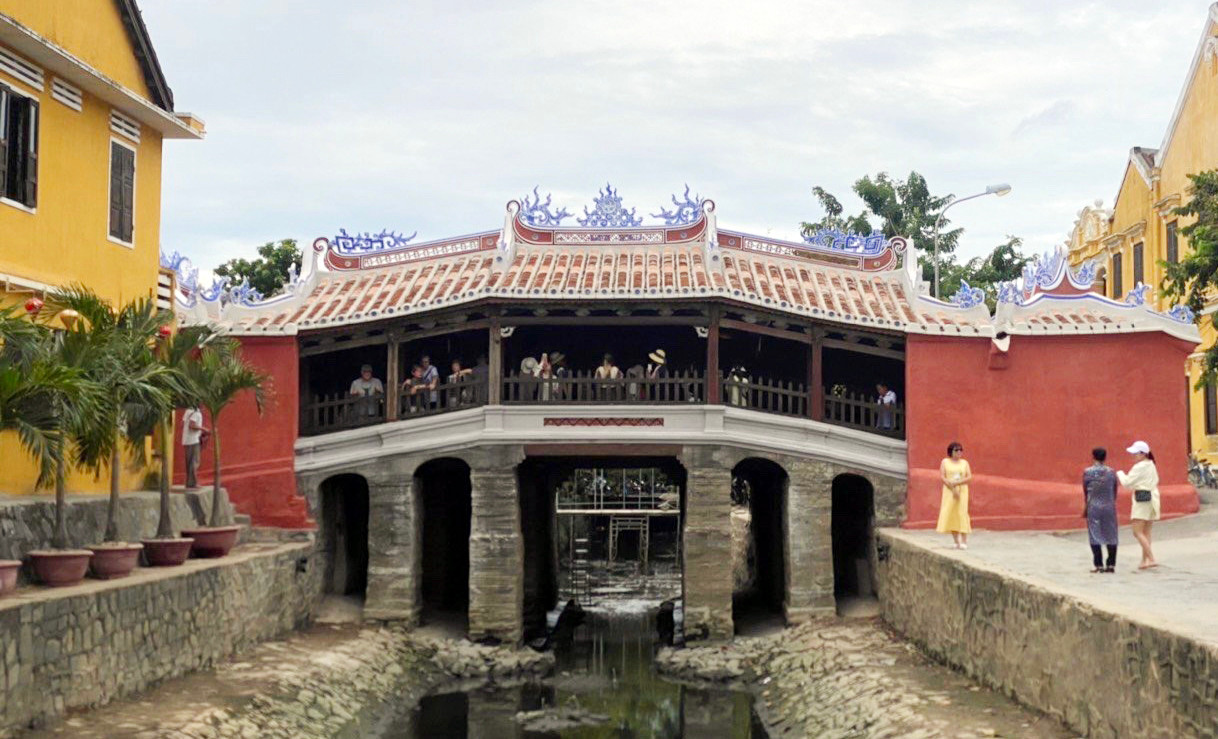
According to documents from the Hoi An Cultural Heritage Management and Preservation Center, since its construction until today, although it has been preserved and kept intact by the Hoi An community, historical documents also show that the Japanese Covered Bridge has undergone at least 7 major restorations in the years 1763, 1817, 1875, 1917, 1962, 1986, 1996.
During the French colonial period, the Japanese Covered Bridge was restored by the government and the community. The restoration process is recorded in three stone steles and a crossbeam that still remain at the site. During the Republic of Vietnam government, around 1962, the Japanese Covered Bridge was restored, replacing and reinforcing the rotten structures.
The restoration of the Japanese Covered Bridge in 1986 was carried out from August to October, by the Ministry of Culture (now the Ministry of Culture, Sports and Tourism) in coordination with the People's Committee of Hoi An Town (now the People's Committee of Hoi An City). The restoration items included the restoration of the roof and the restoration of the bridge floor as it is today. In the year of Binh Ty (1996), the People's Committee of Hoi An Town (now the People's Committee of Hoi An City) continued to carry out the restoration of the Japanese Covered Bridge. The restoration items included rebuilding half of the western pillar and casting the northern wall beams.
On July 24, 1999, the Consultation Conference on the Restoration of the Japanese Covered Bridge was held with the attention of many experts in research and preservation of architectural heritage in the country. Over the next decade, the contents related to the restoration and rescue of the Japanese Covered Bridge were continuously discussed and debated. However, due to concerns that the Japanese Covered Bridge would become “new and younger”; as well as not finding the most suitable solution for the restoration of a symbolic and valuable structure like the Japanese Covered Bridge, for a long time, the restoration only stopped at the level of reinforcement and support to avoid the risk of the monument collapsing.
In 2016, in the face of the increasingly serious deterioration of the Japanese Covered Bridge, an international conference on the restoration of the Japanese Covered Bridge was held with the participation of many scientists and leading experts in the restoration of wooden architectural relics in the country and Japan. Although the conference results did not provide solutions for each specific problem, they reached a consensus on the general view that the Japanese Covered Bridge needs and is urgently required to build a comprehensive and fundamental restoration project for the purpose of preserving the intact and long-term value of the relic.
Since then, the preparation work for the restoration of the Japanese Covered Bridge has been focused on promoting many aspects of historical, cultural, architectural and artistic research; surveying and archaeologically assessing the technical status and original traces; drawing and digitizing architecture; determining viewpoints, principles and restoration solutions; consulting with experts; organizing, agreeing and approving documents...
On December 28, 2022, the restoration of the Japanese Covered Bridge began, with a total estimated cost of about 20 billion VND, invested by the People's Committee of Hoi An City. After more than 19 months of construction, the restoration project of the Japanese Covered Bridge (Hoi An City) was completed.
Strictly follow the restoration process
Architect Dang Khanh Ngoc - Director of the Institute for Monument Conservation (Ministry of Culture, Sports and Tourism), from a professional perspective, believes that the most important issue of the project is not the light or dark exterior color but whether the restoration process of the Japanese Covered Bridge is guaranteed or not.
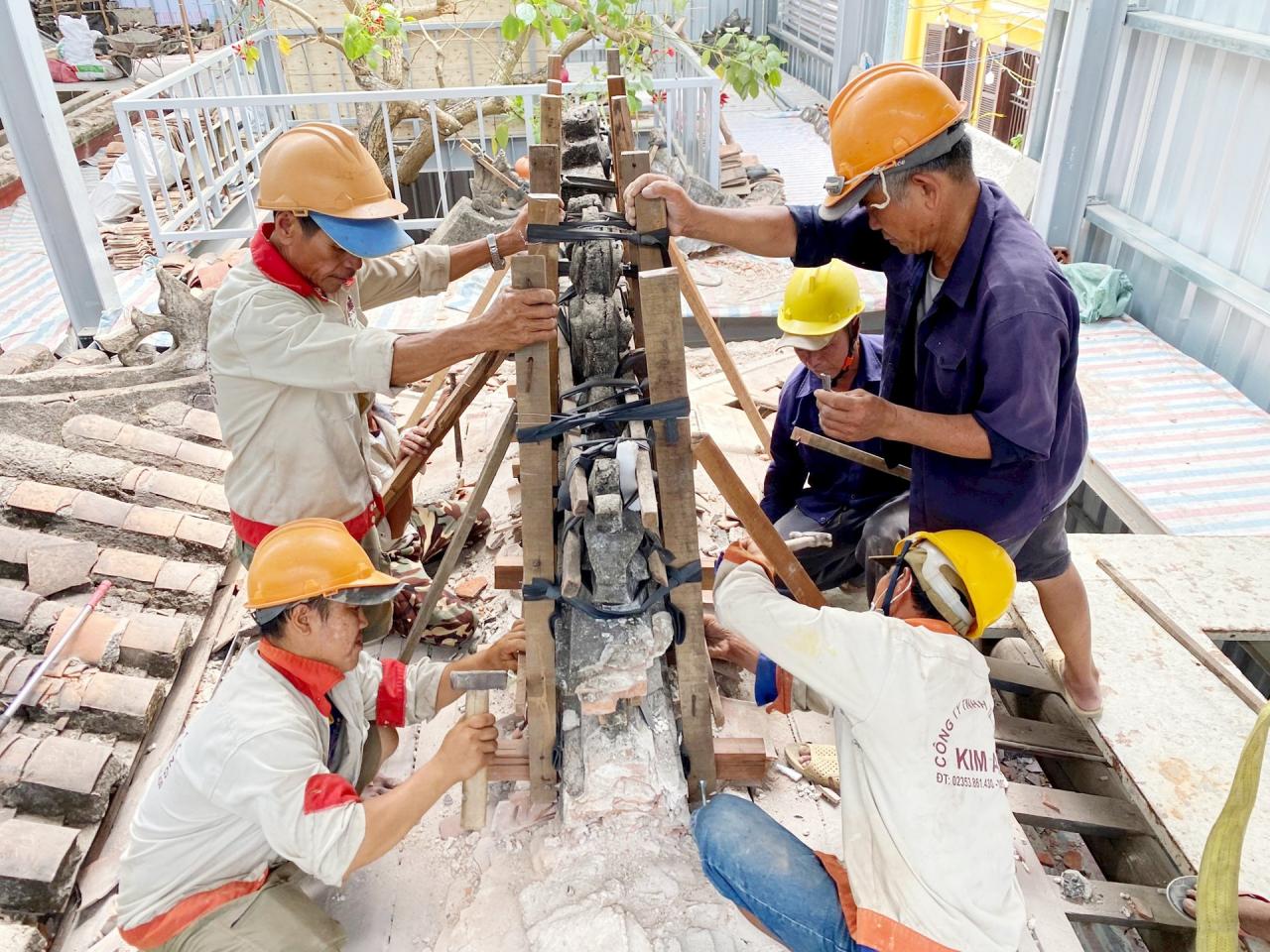
And, this took place quite systematically and completely, especially in the preparation of documents, materials, consultation with experts, researchers, organization of document appraisal... Even, right from the beginning, Japanese experts participated in surveying, evaluating the current status, techniques, original traces, and restoration records of the Chua Cau relic. At the same time, through the long approval process of many specialized management agencies, it was possible to affirm the viewpoint and guaranteed restoration solutions.
The provisions of the Law on Cultural Heritage all emphasize that the core requirement of relic restoration is to preserve the original elements of the building to the maximum extent possible. However, what are the original elements? What are the restoration results?... must be based on the records and professional assessments, including the qualifications and perspective of the assessor.
According to the Hoi An Cultural Heritage Conservation Center, the basic viewpoint in the restoration of the Japanese Covered Bridge relic is to simultaneously preserve the value and maintain the function of the relic. Therefore, in addition to providing solutions to preserve the characteristics and values of the relic, the intervention solutions are all aimed at ensuring increased stability and long-term sustainability for the Japanese Covered Bridge, maintaining the integrity of the function of each component (pagoda, bridge) of the relic.
The restoration process has thoroughly resolved structural issues to ensure long-term stability for the monument; eliminated harmful factors to the wooden frame system, the basic structure of the Japanese Covered Bridge, and the load-bearing foundation system, and protective embankments to ensure the overall stability of the structure.
Along with that, research is needed to supplement structural reinforcement solutions in the direction of minimizing and isolating vibrations caused by traffic activities, preventing impacts and negative effects on the stability of the relic while still retaining as much of the old and ancient components and structures as possible.
In case of mandatory replacement, use materials similar to the original material.
In particular, publicize the newly replaced part, clearly revealing the viewpoint and restoration techniques, so that they are naturally stained with time, without forcing. Reuse the maximum amount of roof tiles and masonry decorations on the roof because these are witnesses of time, of previous maintenance periods.
Architect Dang Khanh Ngoc believes that increasing the sustainable endurance of the Japanese Covered Bridge in the current conditions of receiving large numbers of visitors is an acceptable reinforcement method because it is located underneath and does not change the image of the Japanese Covered Bridge.
“With the current level of technology and techniques, there is no relic that cannot be restored. Therefore, the most difficult problem in restoring the Japanese Covered Bridge, as well as any other relic, is not the technical solution but the unification of viewpoints and how to perceive it,” Mr. Ngoc added.
A relic restoration "factory"
The process of restoration and promotion of relic values in Hoi An over the years has become a part of daily life, helping the relic system in this ancient town to last over time.
"Breathing life" into relics
The gate of Ba Mu Pagoda is a complex of cultural and religious architecture of Cam Ha Palace - Hai Binh Palace, considered one of the typical and important architectural works of ancient Hoi An built by the Minh Huong community in Hoi An. In 1930, the French Far Eastern Institute included this relic in the list of classified ancient relics, as the most outstanding architectural work in Quang Nam along with two other relics in Hoi An: the Japanese Covered Bridge and the Trieu Chau Assembly Hall. However, through the ups and downs of time, the relic is almost in ruins, with only the entrance gate remaining.
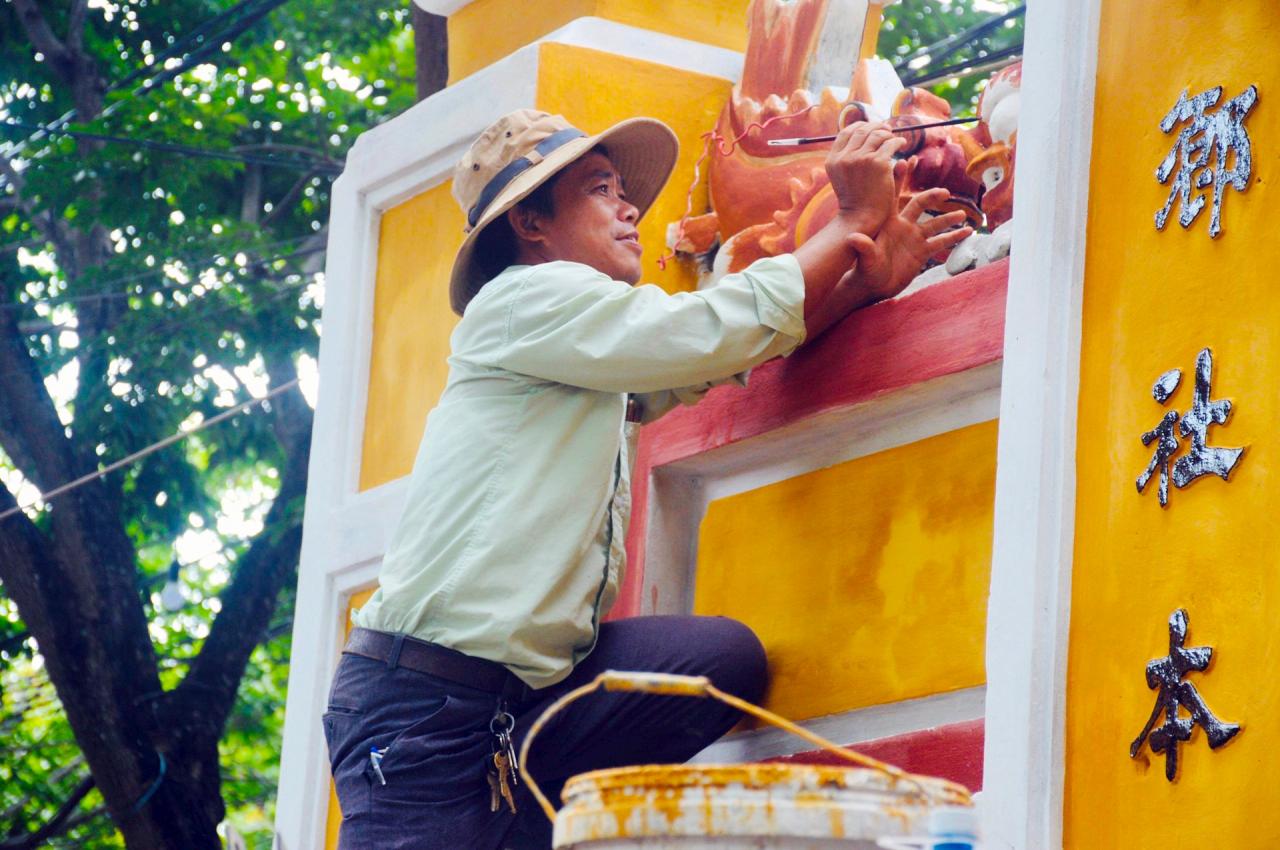
At the end of 2018, the Ba Mu Pagoda Gate project - part of the investment project to preserve and urgently restore relics at risk of collapse in Hoi An Ancient Town was inaugurated. After more than 5 years of operation, this relic has now become a new highlight of the ancient town, attracting a large number of tourists to visit, admire and appreciate the restored architecture. Recently, a number of important cultural and tourism events have also been organized by Hoi An city at this relic such as welcoming the first international delegation in 2024, a violin performance by Maestro Vilmos Oláh (Hungary), the performance "Hoi An - the color of silk" ...
That is just one of the typical examples of relics in Hoi An being restored to ensure accuracy, while promoting their value and being welcomed by the public. Some other relics have been restored in recent years and have gradually become destinations visited and explored by many tourists compared to before, such as: Hoi An communal house (Ong Voi communal house), Hoi An prison, Cao Hong Lanh comrade memorial house (Tran Phu street), Hai Tang pagoda, Yen Yen ancestor temple... and many ancient houses in area I of Hoi An ancient town.
Currently, in Hoi An city, there are 1,439 relics belonging to all 4 types according to the classification of the Law on Cultural Heritage and related decrees and circulars. In addition to the Old Quarter, which is ranked as a special national relic, among the 1,439 relics listed, there are 27 relics ranked at the national level, 49 relics ranked at the provincial level, and 104 relics listed in the protection list of Quang Nam province for the period 2019 - 2024.
In fact, some relic restoration works in Hoi An have been awarded by UNESCO Asia - Pacific such as: "Award of Merit" for Truong clan temple for preserving cultural works in 2004; "Award of Honor" for Tang clan temple for preserving cultural works in 2009...
Mr. Nguyen Van Son - Chairman of Hoi An City People's Committee said that the system of relics has long been recognized by Hoi An City as a valuable resource to promote tourism development, not only within the ancient town but also spreading and connecting to the suburban areas. On the basis of the relic system, Hoi An always puts the issue of conservation for development and development creates motivation for conservation.
Multipurpose Restoration
In fact, the restoration of relics in Hoi An is not easy. The restoration requirements must ensure traditional materials, but currently the source of wood is very scarce due to the policy of closing forests. Alternative roofing materials cannot be produced using traditional techniques due to environmental protection requirements...
Typically, in the construction of the Gate of Ba Mu Pagoda, among the traditional construction materials used to restore this relic, many of the materials are quite rare on the market, and must be purchased from other areas in the province or other provinces. The process of making materials is also quite complicated, having to be done by hand and going through many stages.
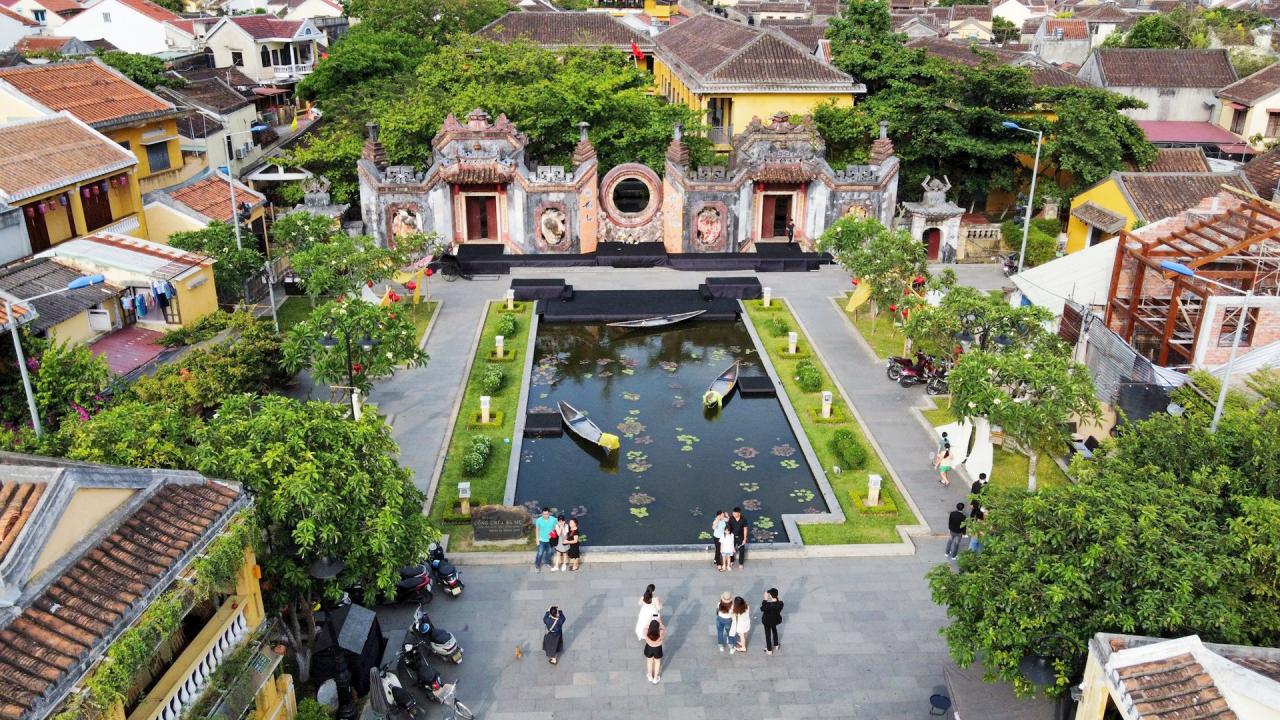
Another challenge is that while the restoration requires maximum preservation of original elements, the owner of the relic wants to replace the structure, more specifically, the joint solution; the owner's need to replace flooring materials, mortar, etc. when restoring compared to the current state of the construction.
Mr. Pham Phu Ngoc - Director of Hoi An Cultural Heritage Management and Preservation Center said: “For a long time, all relics in Hoi An have been inventoried, assessed, and classified for preservation with 5 levels of ranking. Each level of relic will have different regulations and repair rules. For special and type I relics, when carrying out restoration, the Center must be the investor. This is to strictly manage to preserve the original elements to the maximum, not simply support funding for private individuals to repair themselves.”
In recent years, using budget funds, Hoi An has invested in renovating and embellishing more than 20 architectural, artistic and religious relics related to the history of the formation of traditional occupations and craft villages in the area, including many relics owned by individuals and collectives. Through restoration, many relics have been well promoted, both serving the cultural and religious needs of the community and being interesting attractions for tourists on their journey to experience the craft villages and countryside in Hoi An.
Ms. Pham Thanh Huong - Head of the Cultural Department of the UNESCO Office in Hanoi said that the coordination between the state and the owners in protecting and restoring relics in Hoi An is considered a typical experience in heritage restoration. Hoi An has implemented very well in the development perspective when taking relics and heritage as both a resource and a conservation goal, thereby when mentioning the heritage tourism brand, people often think of Hoi An.
Waiting for Quang Nam Heritage Conservation Fund
Every year, the resources allocated for the conservation and restoration of Quang Nam's relics are quite large, however, with the current state budget allocation, it is difficult to meet all requirements...
The establishment of the Quang Nam Heritage Conservation Fund is expected to create a legal corridor, attract more resources outside the state budget, and help effectively implement projects to restore and renovate degraded relics in the province, especially the two world cultural heritages: Hoi An Ancient Town and My Son Sanctuary.
Proactive
In 2004, the My Son Heritage Management Board (Duy Phu Commune, Duy Xuyen) established the My Son Restoration and Development Fund. Every year, the unit allocates 25% of ticket sales (Decree 60 of the Government) to the fund to carry out infrastructure construction, minor repairs, restoration, and preservation of relics...
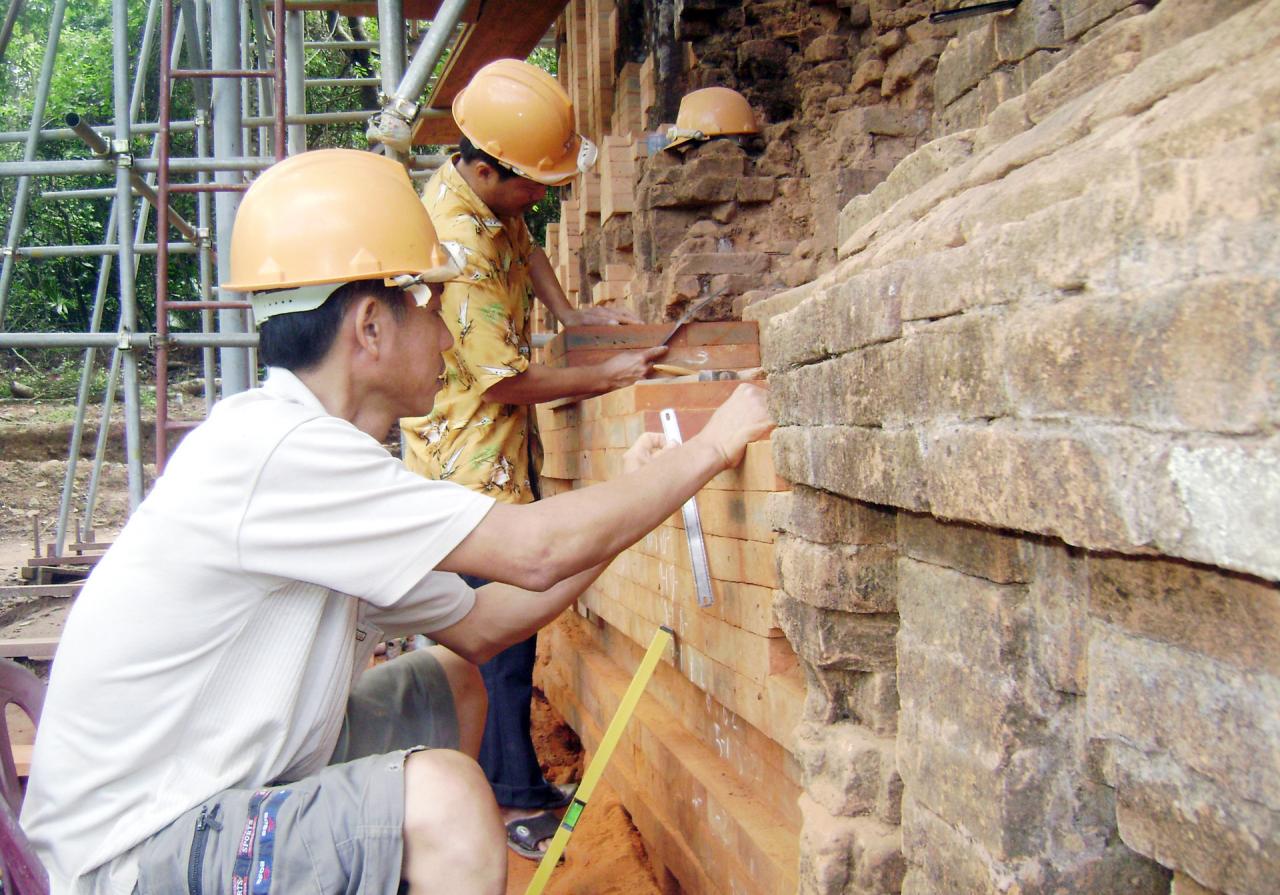
After 20 years of implementation, the My Son Restoration and Development Fund has brought about quite clear results. Many small restoration and renovation items such as locating architectural components, reinforcing surrounding walls, arranging artifacts, cleaning tower walls, etc. have been proactively and promptly implemented by the unit. In particular, the capital allocation for large restoration projects is also quick and convenient. In just 5 years of implementing the project to preserve tower groups H, K, A (2017-2022), the total amount of counterpart funds from the My Son Restoration and Development Fund is about 5 billion VND.
As of early July 2024, Quang Nam has 458 ranked relics, including 4 special national relics, 67 national relics and 387 provincial relics. Many of these relics have been and are deteriorating and need urgent annual restoration, especially at the two world cultural heritages of Hoi An and My Son.
Therefore, the demand for conservation resources is very large. In the ancient town of Hoi An, although every year about 50% - 70% of the revenue from ticket sales is used to restore and embellish relics, and support the restoration of collective and private relics, it seems insignificant because the restoration cost is quite large (the lowest is about 5 billion VND), so each year it is only enough to restore 7 - 10 ancient house relics.
Statistics show that Hoi An still has about 150 degraded relics that need to be supported, of which more than 20 relics are at risk of collapsing at any time, especially during the rainy and stormy season.
Establishment of Quang Nam Heritage Conservation Fund
Mr. Nguyen Thanh Hong - Director of the Department of Culture, Sports and Tourism said that, besides the achievements, the work of preserving relics still has many limitations and difficulties related to state regulations such as authority, order, procedures for establishing and approving plans, projects for preserving, renovating and restoring historical and cultural relics, scenic spots...
Besides, due to the frequent impact of natural disasters and floods, the relic system in the province always faces the risk of damage and degradation, especially for relics in the world cultural heritage space.
The state budget for annual investment in relic restoration cannot meet the demand, therefore, the establishment of the Quang Nam Heritage Conservation Fund will create a mechanism and legal basis for mobilizing, managing and using funds to preserve and restore relics, especially for the two world cultural heritages of Hoi An and My Son.
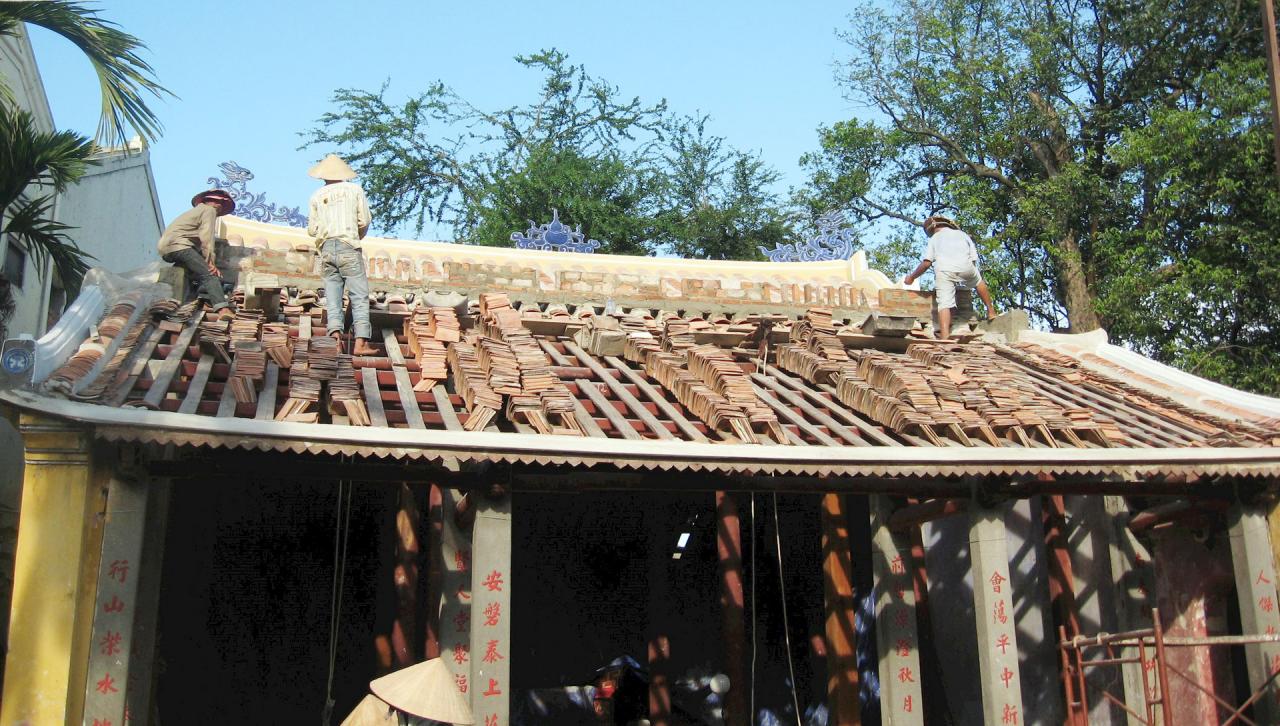
This issue has been proposed by the Department of Culture, Sports and Tourism in many documents and related meetings of the province and the central government. “The establishment of the Quang Nam Heritage Conservation Fund was proposed by the provincial leaders to Prime Minister Pham Minh Chinh 2 years ago during the Prime Minister's working trip to Quang Nam (late March 2022). The Prime Minister also agreed in principle and assigned relevant ministries and branches to consider. However, the Ministry of Finance said that it must wait for the summary and assessment from the Heritage Conservation Fund of Thua Thien - Hue province (on legal basis, operation...) to gain experience before expanding the implementation, so Quang Nam must wait" - Mr. Hong said.
In early July 2024, during a working session with the National Assembly's Committee on Culture and Education's delegation to survey the implementation of cultural heritage laws and policies, the establishment of the Quang Nam Heritage Conservation Fund was also mentioned.
Mr. Nguyen Thanh Hong affirmed that the establishment of the Quang Nam Heritage Conservation Fund is extremely necessary to help mobilize social resources to contribute to heritage conservation more easily and promptly.
“At present, if social resources are contributed, we do not know where to put them. If they are put into the state budget, when we want to take them out, we have to follow the regulations and procedures, which is very difficult. Therefore, the establishment of the Quang Nam Heritage Conservation Fund with a clear legal basis, an executive board, specific operating regulations, and transparent public finances will help mobilize social resources more effectively, and the procedures for allocating funds for heritage restoration and conservation will also be quicker and easier,” Mr. Hong analyzed.
The role of communication in conservation projects
The story of the Japanese Covered Bridge after restoration “becoming strange” is “hot” in both mainstream media and social networks. There are many emotions coming from those who are genuinely interested in the Japanese Covered Bridge, but there are also those who “follow the trend” to create waves on social networks.
Following this, I saw many things, good and bad. But for those who do the restoration of relics in Hoi An in particular, and for projects to preserve and restore tangible cultural heritage in Vietnam in general, it is the communication activities in these projects.
Make the restoration process transparent
Many comments on articles about the restoration of the Japanese Covered Bridge published in newspapers and social networks said that this project should have been widely introduced, from the scale of investment, implementation time, construction unit... to the selection of methods, principles and techniques of restoration and the team of experts, craftsmen... participating in the restoration process. If so, the public would know more clearly and be less "surprised" when they saw that after nearly two years of covering the construction for restoration, when the covering house was dismantled, a "strange Japanese Covered Bridge" was revealed in their eyes.
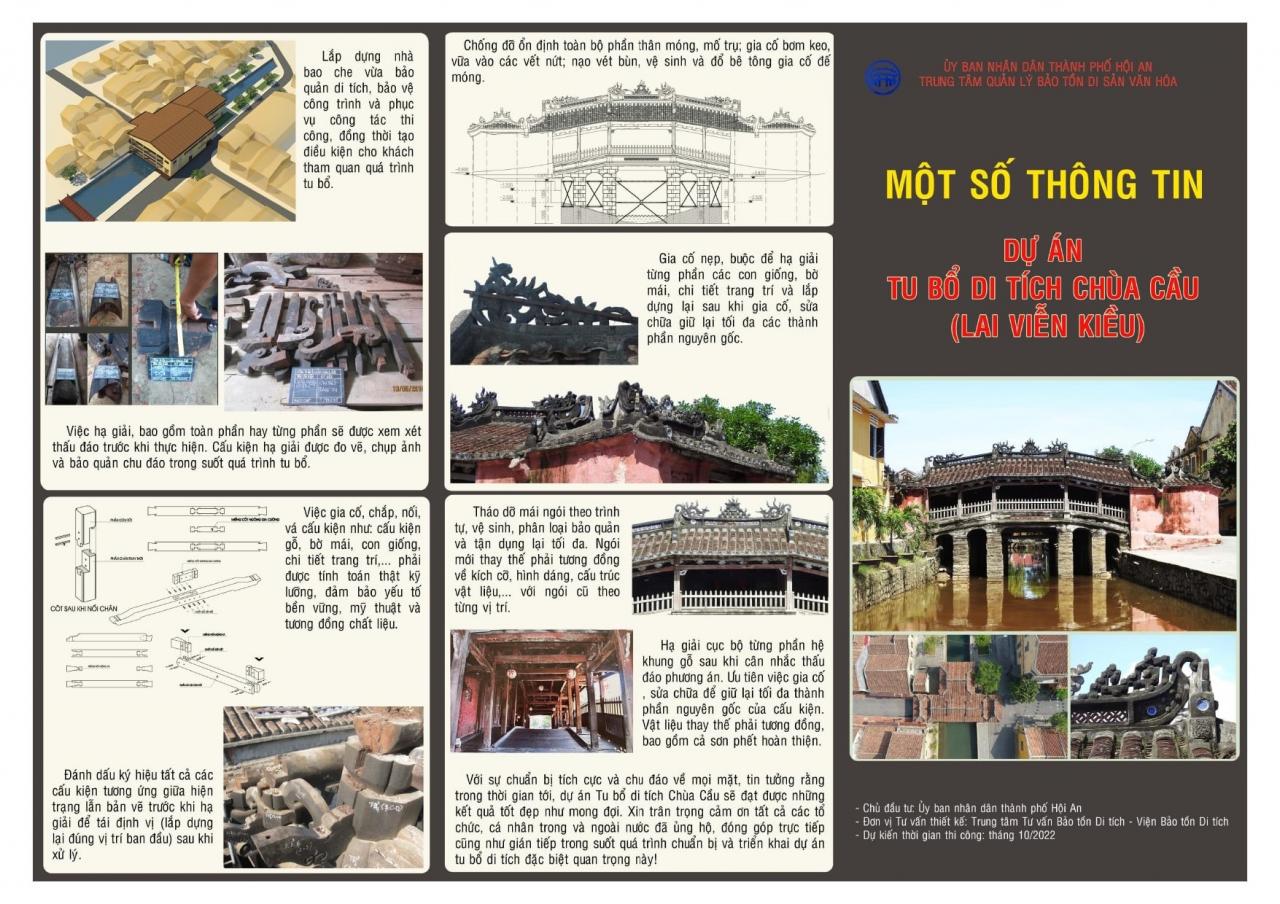
In fact, the authorities in Hoi An have published pamphlets introducing the Japanese Covered Bridge restoration project with lots of information, pictures, technical drawings, etc. that are very detailed and eye-catching. But for some reason, the information in the pamphlets is little known to the public, while the public has few opportunities to access the site to visit and learn about the Japanese Covered Bridge restoration process.
There is a story about the “transparency” of information during the restoration of the Huu Tung Pagoda (in the tomb of King Minh Mang) in Hue. This project was funded by the Toyota Foundation (Japan) with 6 million yen for restoration. At the same time, the Japanese side also sent a group of experts led by Prof. Dr. Architect Shigeeda Yutaka (a wood conservation expert at Nihon University) to Hue to support the construction team at the Hue Monuments Conservation Center (HMCC) in restoring this project.
During the restoration process that lasted from 1996 to 1998, the Japanese expert group requested the Hue Monuments Conservation Center to remove the signs "Construction under construction. No entry without permission" and replace them with signs "Construction under restoration. Please visit".
Professor Shigeeda Yutaka, in an interview in August 1996, right after the Huu Tung Pagoda restoration project had just begun, said: “First of all, we hope that visitors to Minh Mang Tomb can visit the Huu Tung Pagoda restoration site. We will erect billboards clearly announcing the purpose, process and main issues of the restoration so that visitors can understand the work we are doing. We hope that, if possible, every week on Saturday, for example, the Hue Monuments Conservation Center will organize a presentation explaining the above issues to visitors. In the immediate future, we are ready to send experts to explain the restoration issues and how to choose the restoration method whenever domestic and foreign experts come here to learn.”
During the 2 years of restoration, the group of Japanese experts and the construction team did a good job of "communicating" about the restoration process of Huu Tung Pagoda as proposed by Professor Shigeeda Yutaka.
Opening of the renovation project
When I went to Japan and Korea to study in the field of cultural heritage conservation in 1997 - 1999, I had the opportunity to visit and "learn the trade" at the restoration sites of relics in Matsue, Izumo, Nara, Iwami Ginzan... (Japan) or Gyongbokgung, Kyongju... (Korea). And I saw that these places opened the restoration sites for the public to access and visit.
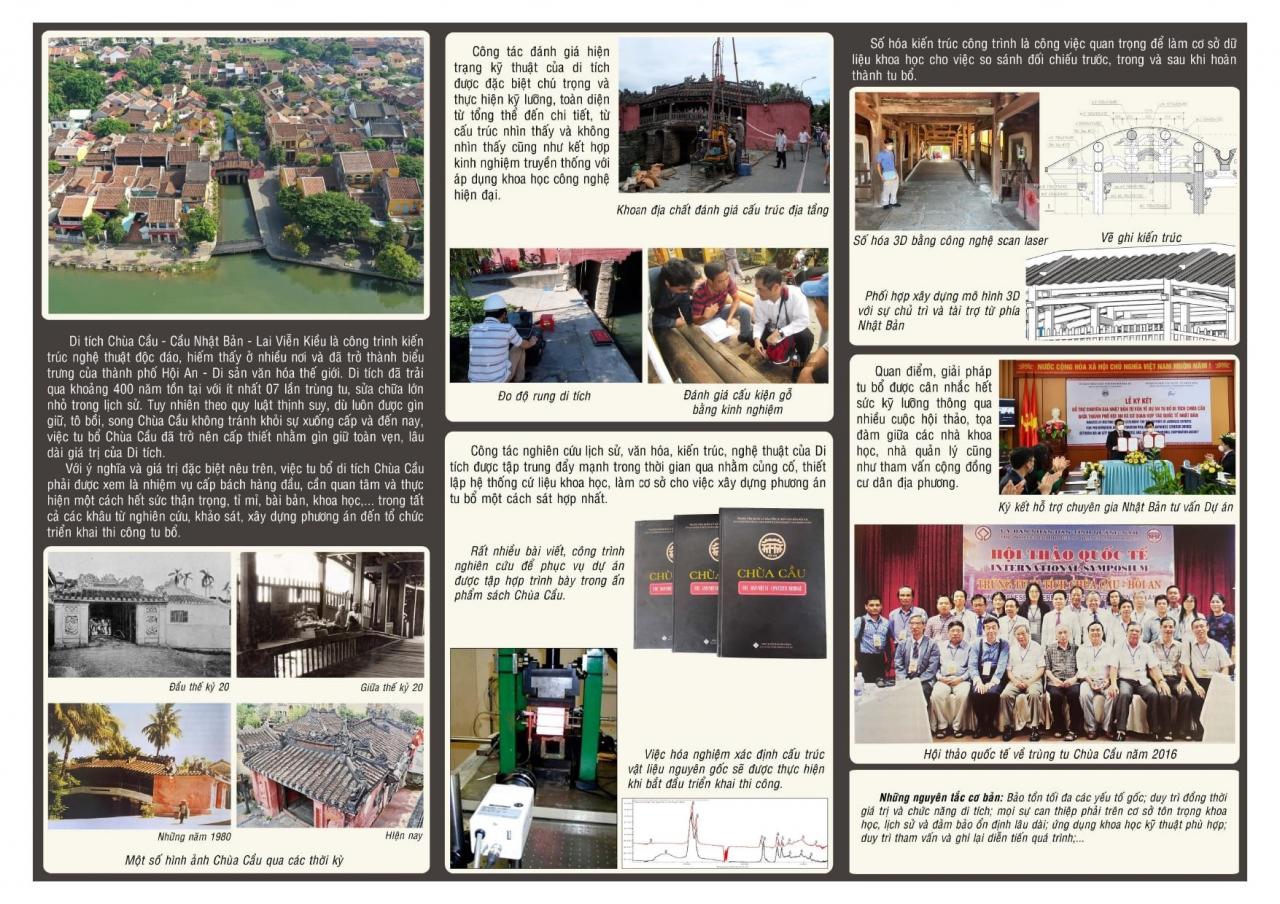
In these places, they arrange staff to work in the project's PR (public relations) department to welcome tourists/residents who come to visit and learn. In addition to native speakers, these staff are also fluent in English to introduce, present and answer questions from tourists.
They arranged separate paths, convenient for tourists to visit the restoration site; provided visitor cards and hard hats for visitors to wear when entering the site, limiting the risk of falling or being hit by falling restoration materials. Those were very good experiences that I had.
Returning to the case of the restoration of the Japanese Covered Bridge in Hoi An, the Hoi An City government and the Restoration Project Management Board should continue to widely disseminate information about the restoration process of the relic to the public as much as possible, in many different forms and means: posting news on newspapers - radio - television, the website of the Center for Cultural Heritage Management and Conservation, the Department of Culture - Information, the Department of Tourism, the People's Committee of Hoi An City; on social networks... so that the public and tourists can better understand the restoration process and the results achieved.
For future restoration projects, the BTDT in Hoi An and Quang Nam in general, it is necessary to carry out stronger communication work. For restoration projects, the BTDT should establish a PR department to take charge of this. It is necessary to change the mindset of "Prohibiting entry to the restoration site" to the mindset of "Inviting visitors to the restoration site" as the Japanese expert group did when participating in the restoration of Huu Tung Pagoda in the tomb of King Minh Mang.
At restoration sites such as the recent Chua Cau, I have seen very large billboards introducing the ongoing restoration project. However, very few people have access to the site, so they do not have the opportunity to read and know this information. Therefore, it is necessary to transform the information on those "inactive" billboards into "live" information, spreading on websites, Facebook, Instagram, TikTok, etc.
Thus, there will be many people who have access to the project information, better understand the work of experts to support or comment and criticize.
Content: Vinh Loc - Quoc Tuan - Tran Duc Anh Son
Presentation: Minh created
Source: https://baoquangnam.vn/trung-tu-di-tich-gio-cong-luan-3138935.html









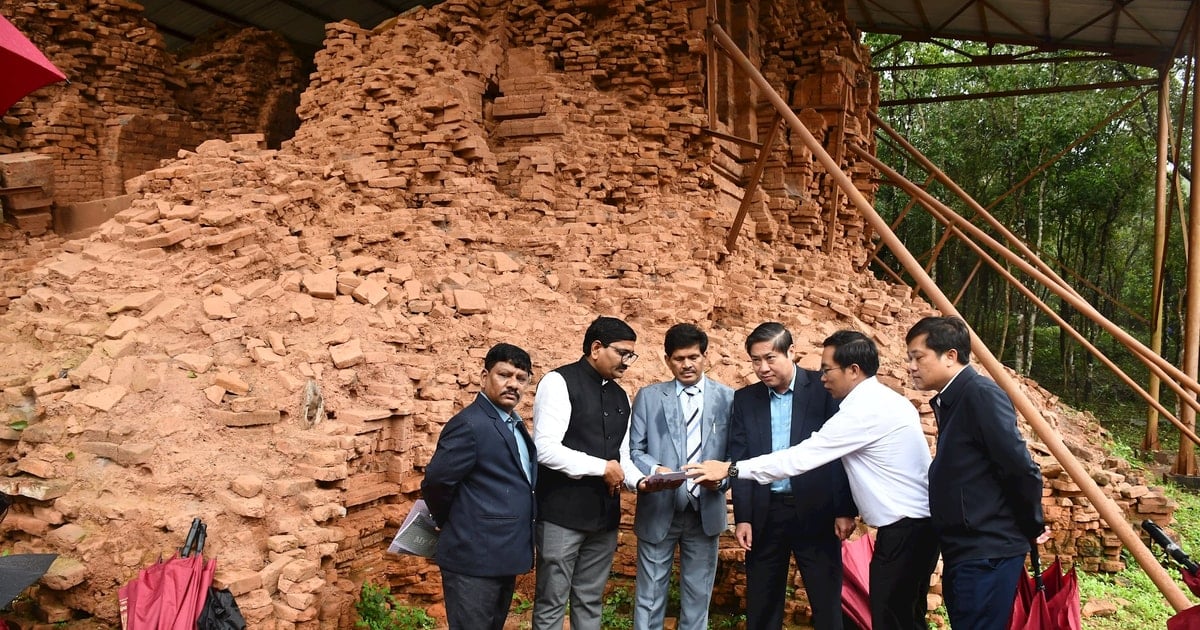
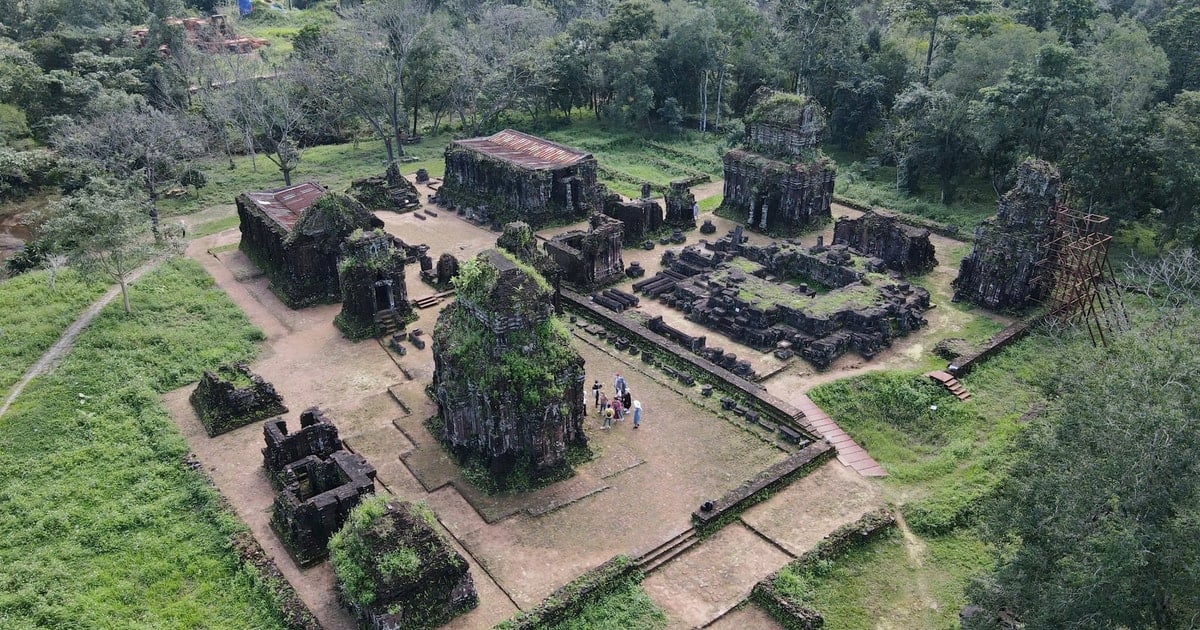
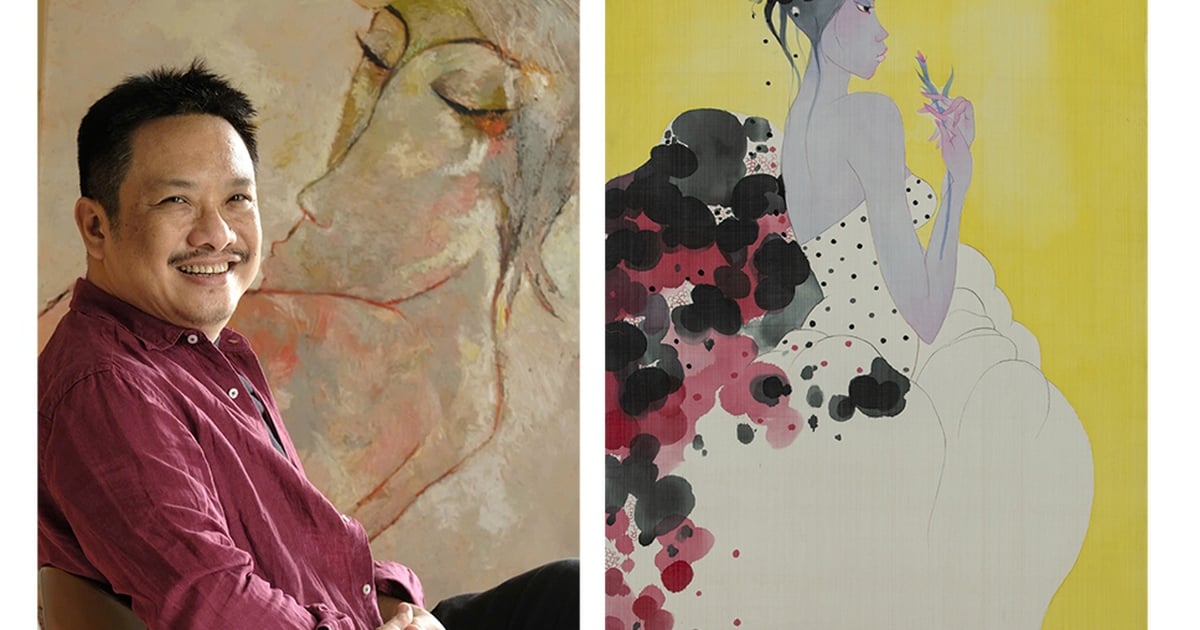

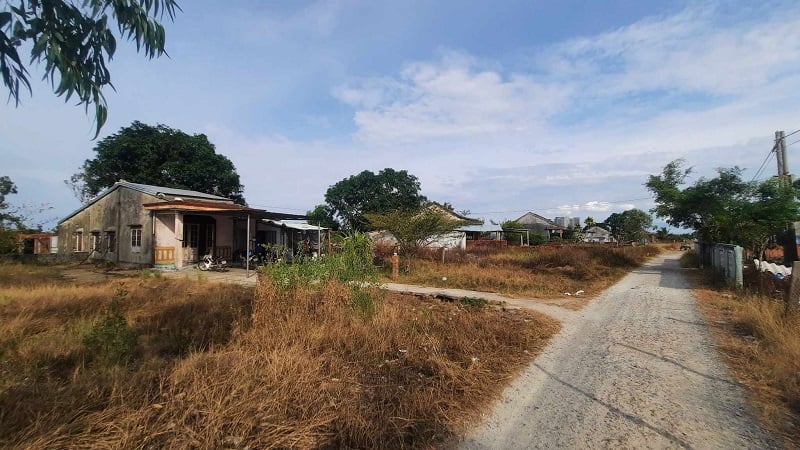

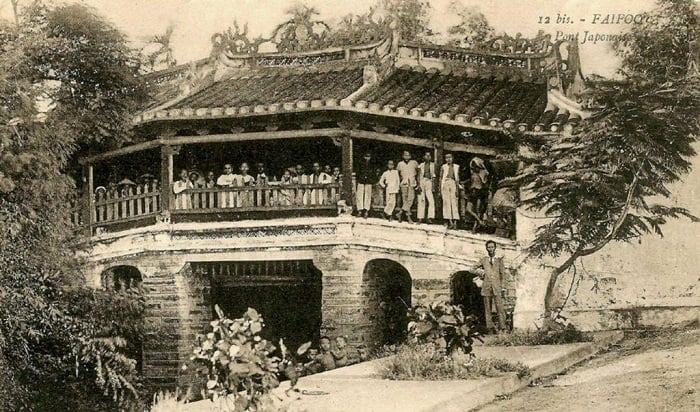

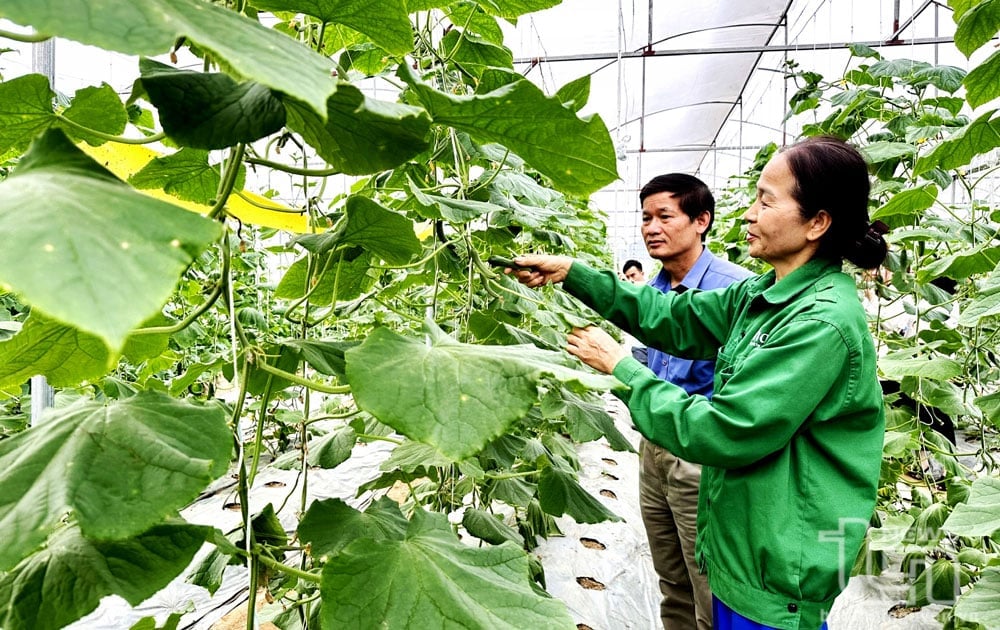
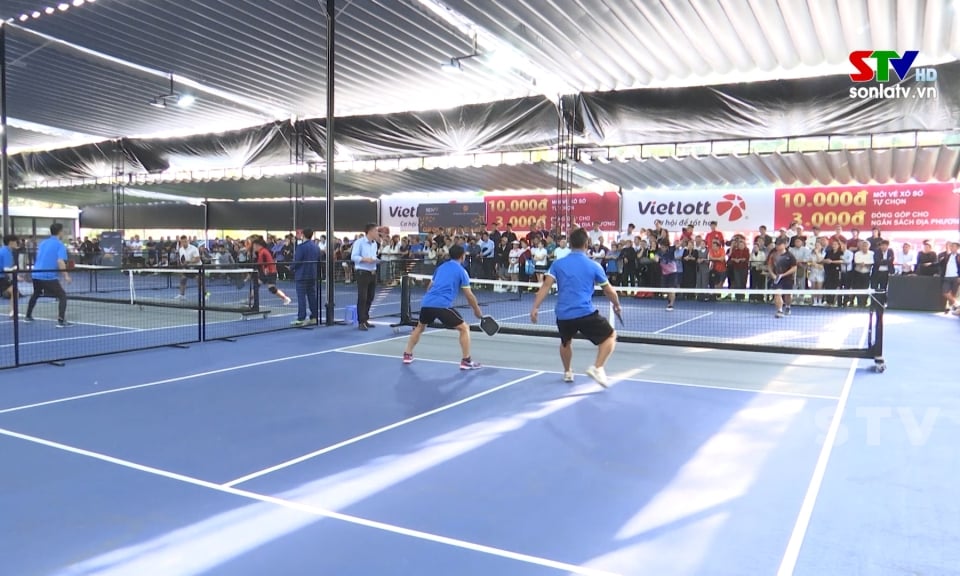
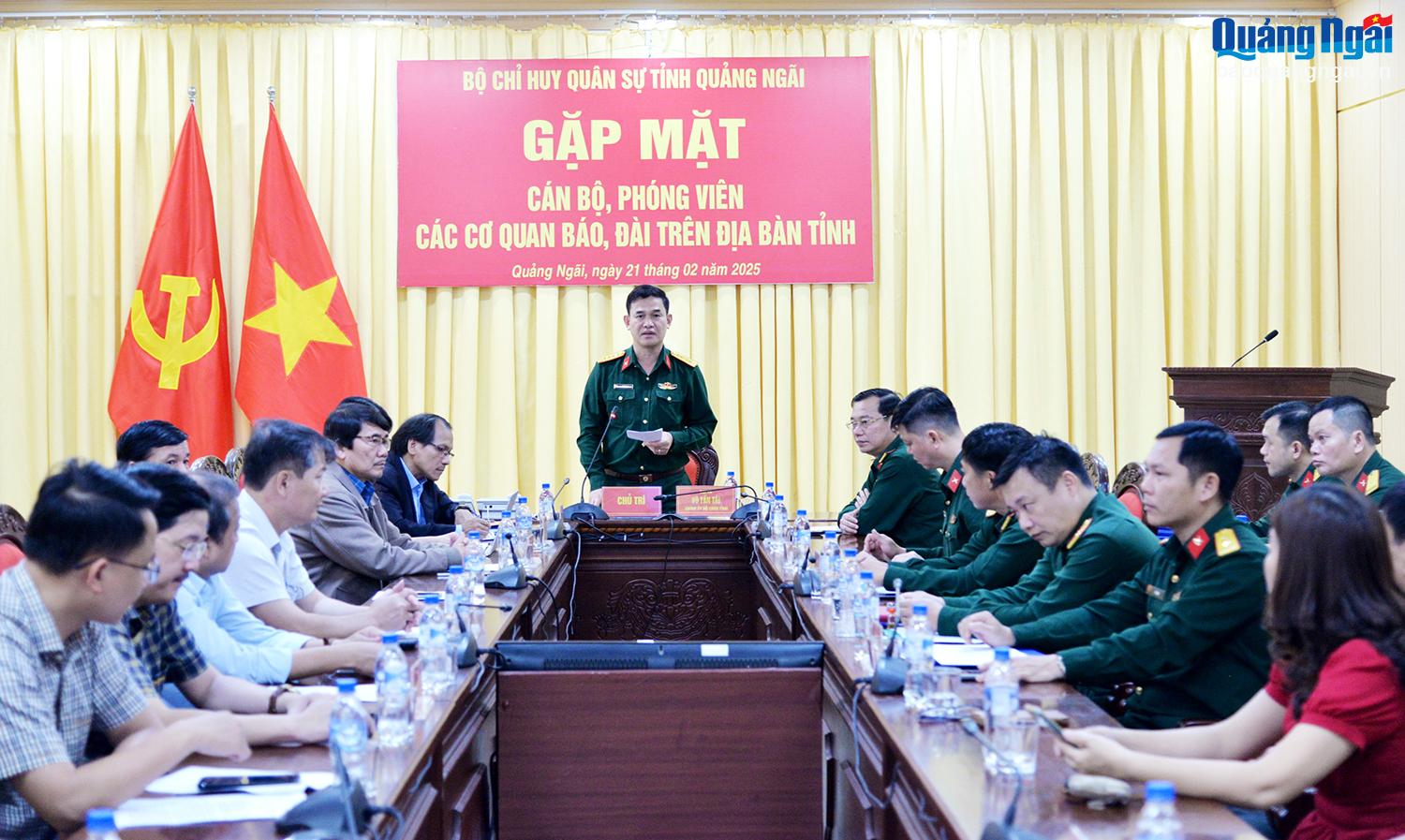
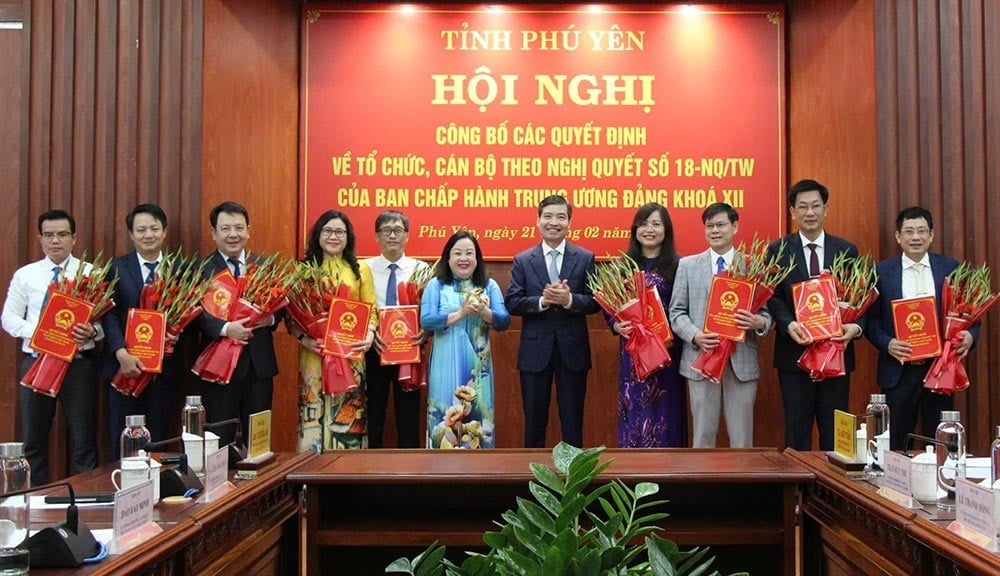
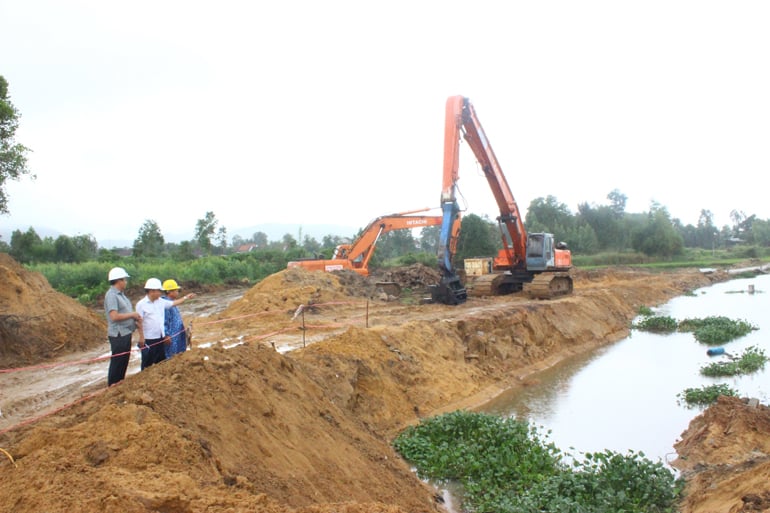
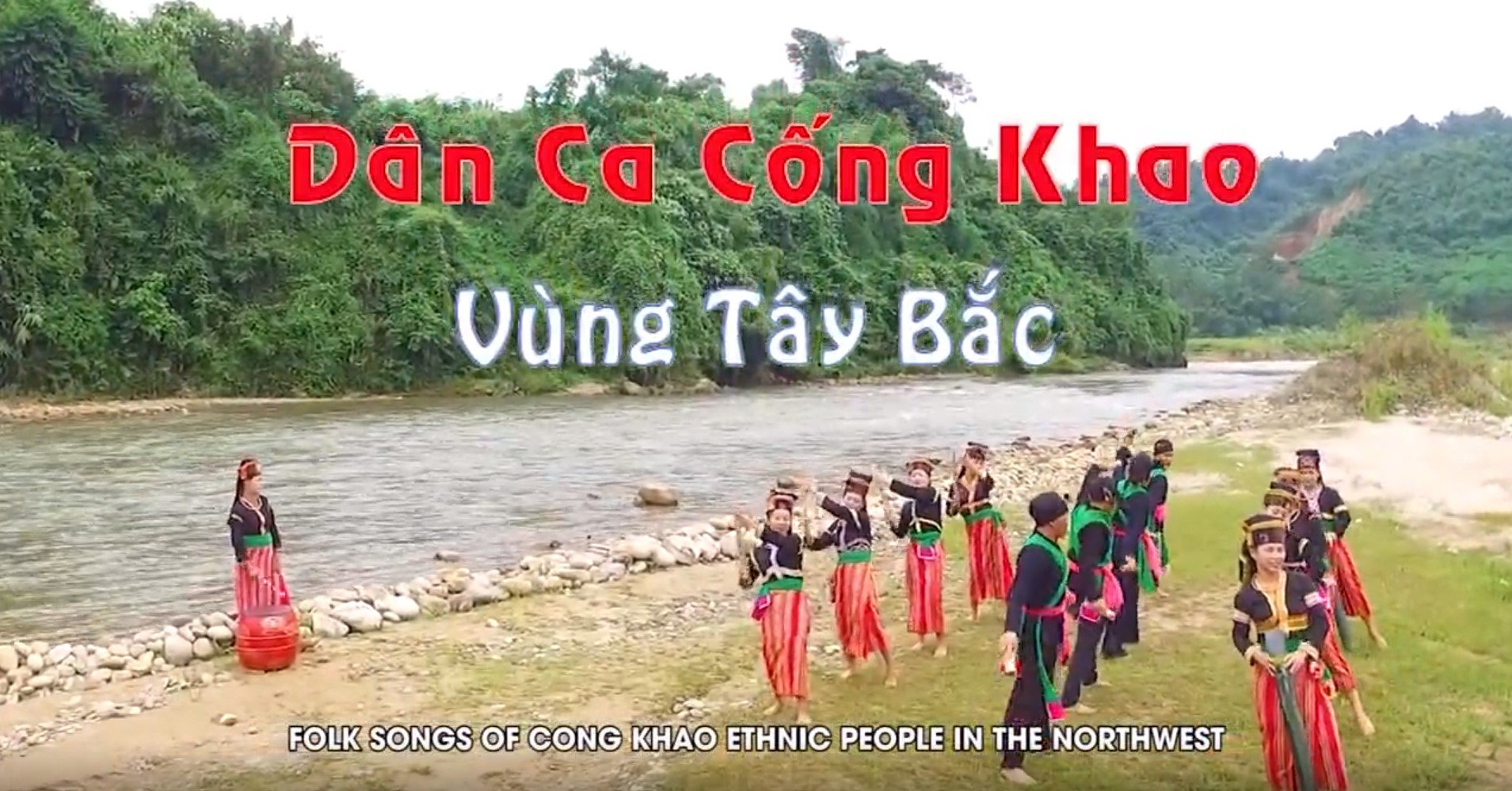
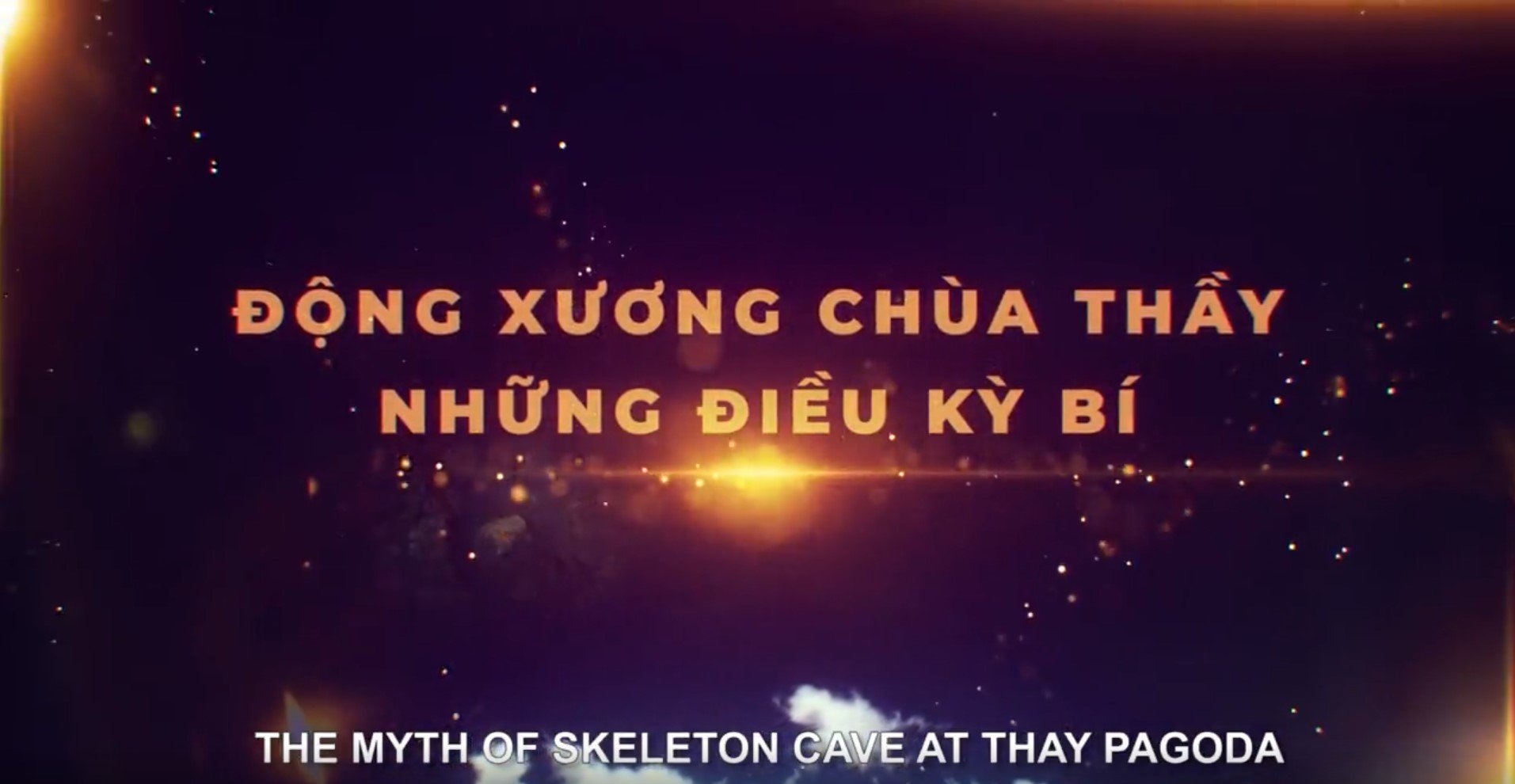
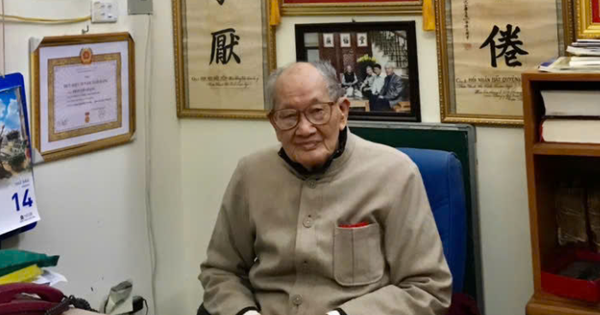












Comment (0)